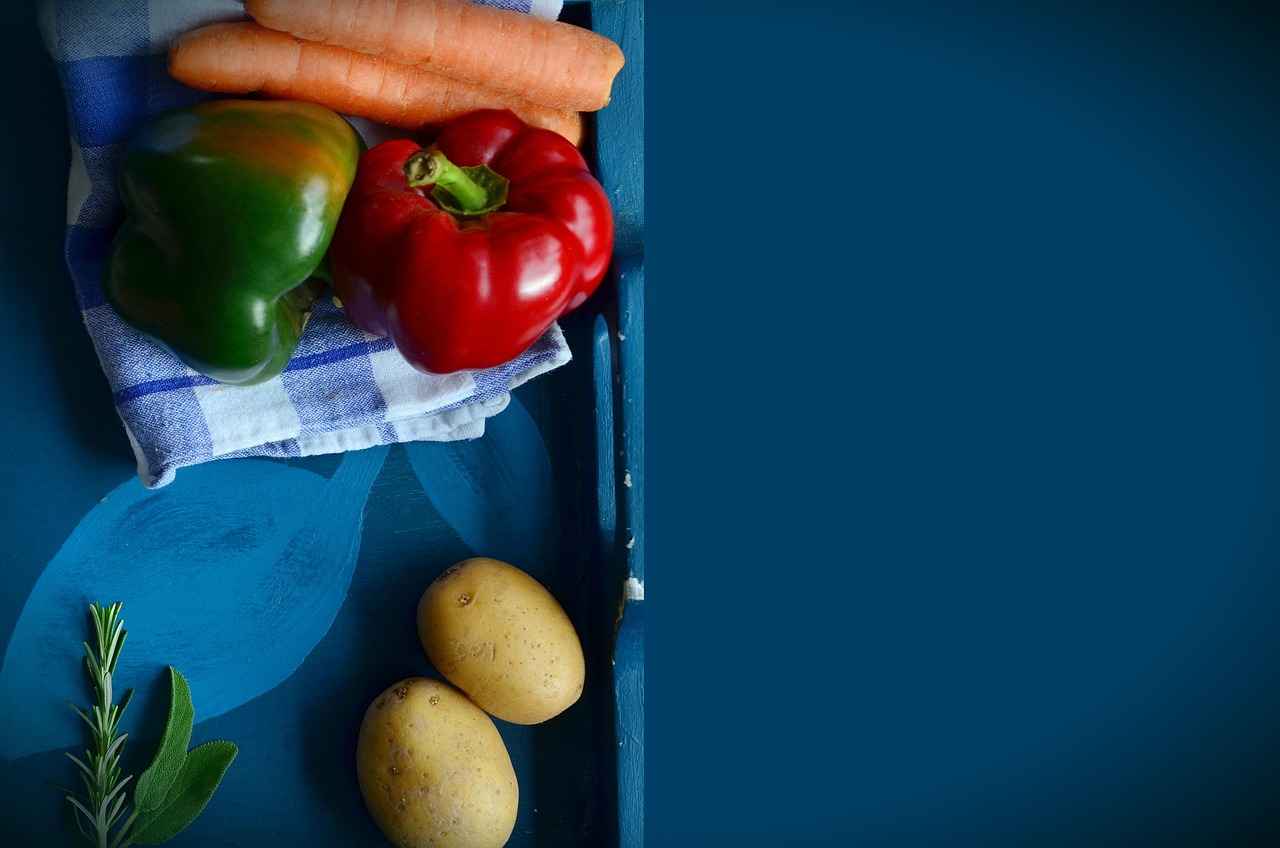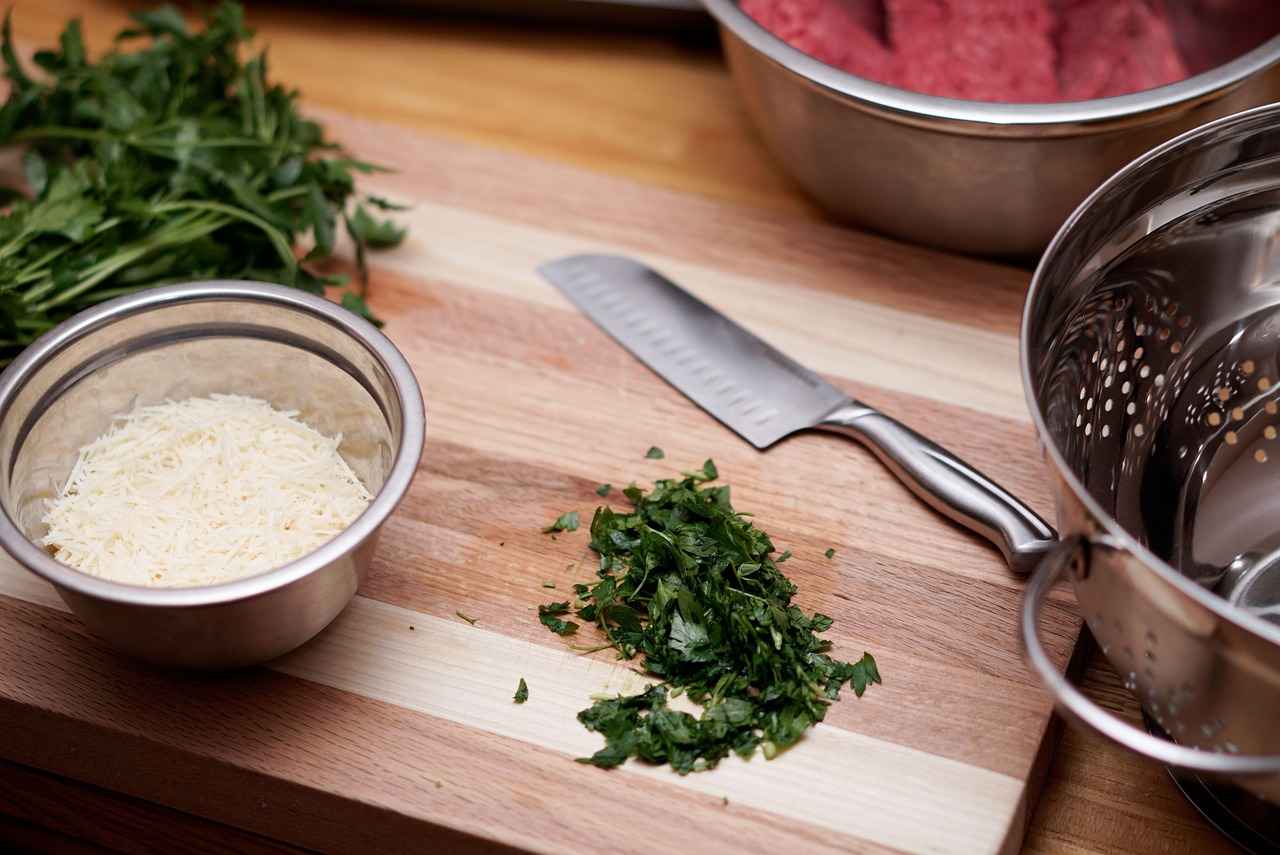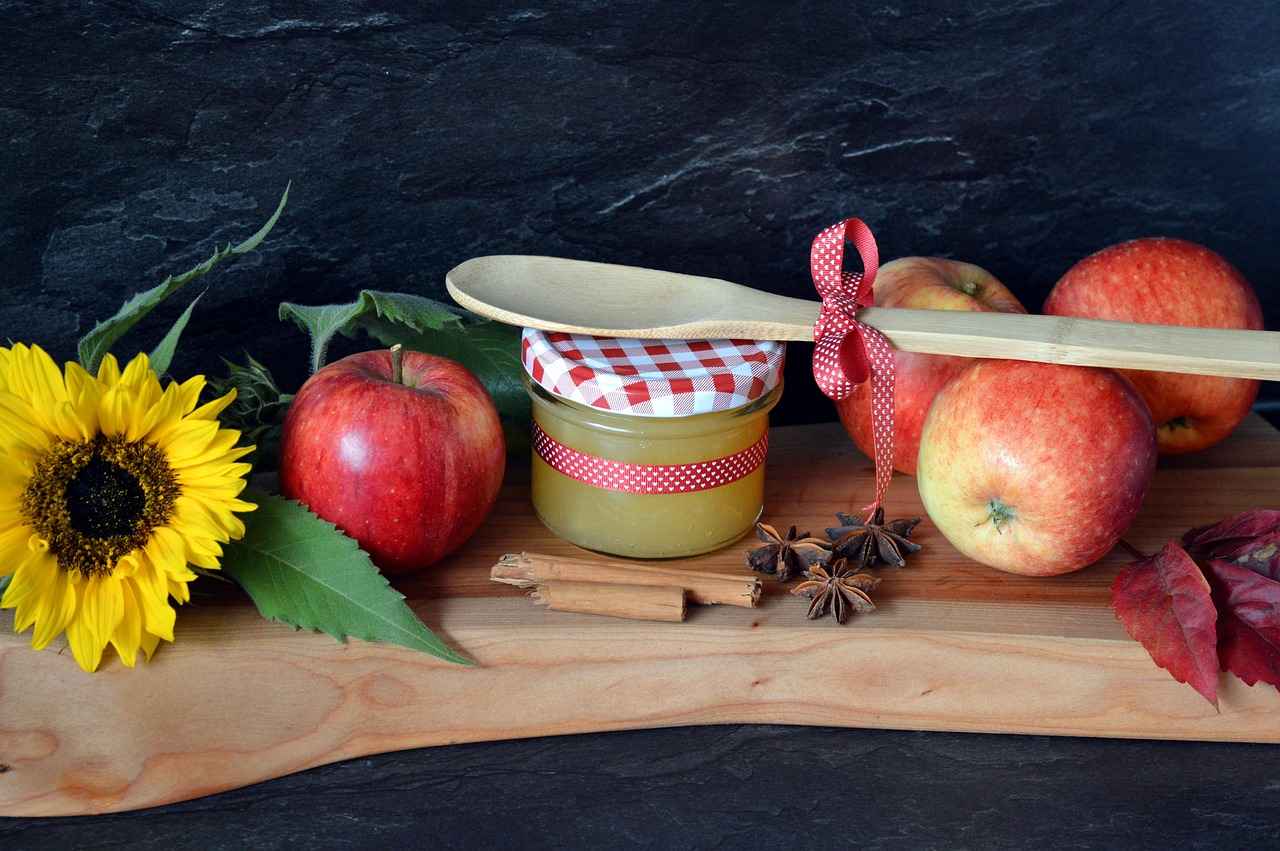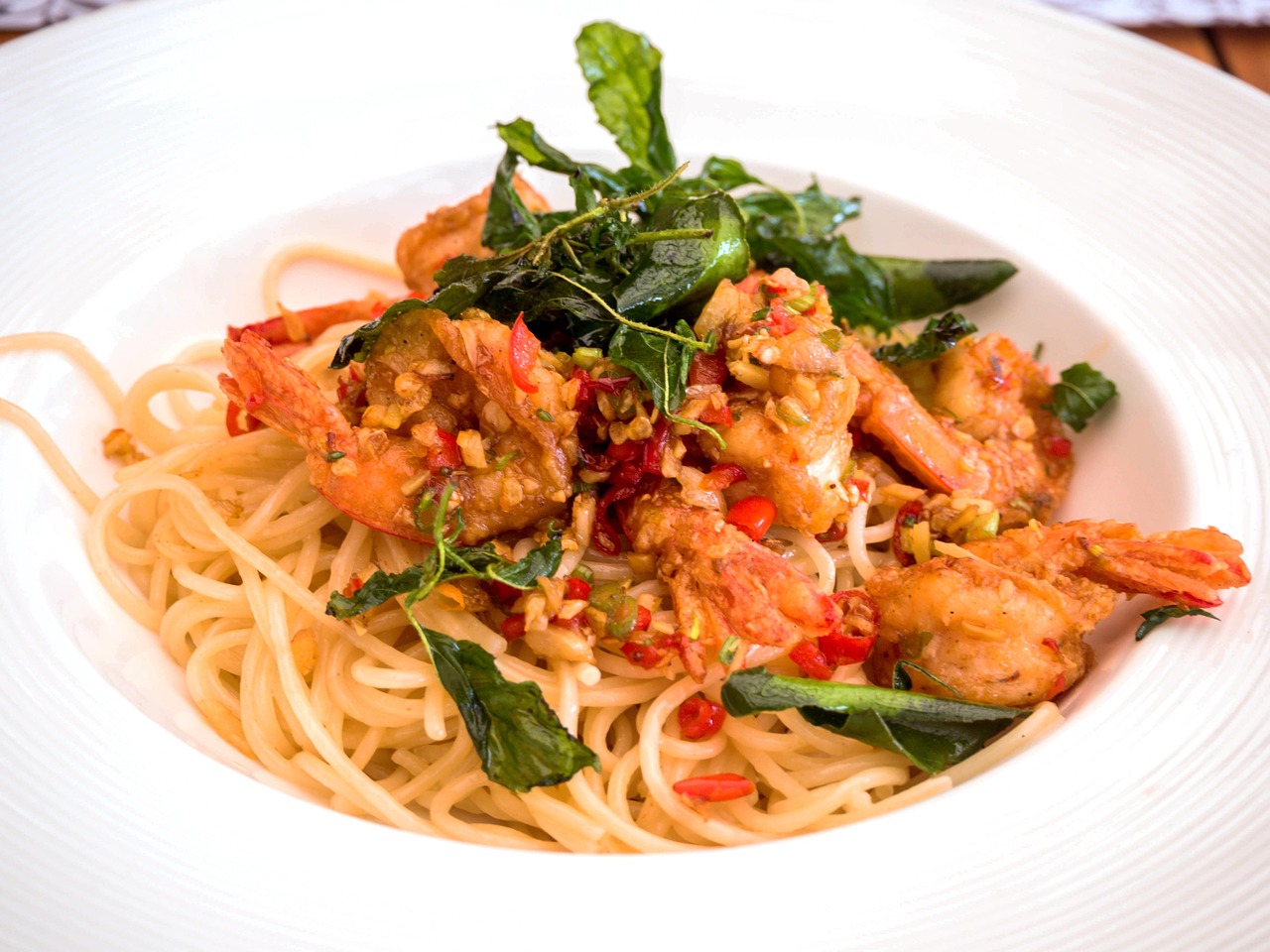This article explores a nutritious recipe for low oxalate spaghetti sauce, ideal for individuals with dietary restrictions. We will cover ingredients, preparation methods, and tips for enhancing flavor while maintaining health benefits.
Understanding oxalates is crucial for those with kidney issues or other sensitivities. Oxalates are naturally occurring compounds found in many foods, and they can bind with calcium to form kidney stones. For individuals prone to these stones, a low oxalate diet can significantly reduce the risk of recurrence. Foods high in oxalates, such as spinach and rhubarb, should be limited, making it essential to find alternatives that are both safe and delicious.
Selecting the right ingredients is essential for creating a delicious low oxalate spaghetti sauce. Here, we discuss which vegetables, herbs, and proteins to include and why they work well.
Tomatoes are a staple in spaghetti sauce. The best varieties for low oxalate recipes include Roma and San Marzano tomatoes, as they are lower in oxalates compared to other types. These tomatoes are not only flavorful but also packed with vitamins and antioxidants, enhancing the nutritional profile of your sauce.
Both fresh and canned tomatoes have their pros and cons. Fresh tomatoes are often favored for their taste and texture, while canned tomatoes can be more convenient and have a longer shelf life. When comparing their oxalate levels, canned tomatoes may have slightly higher oxalate content due to processing. However, they still remain a viable option for low oxalate diets.
Herbs and spices can elevate your sauce without adding oxalates. Consider using basil, oregano, and garlic to enhance flavor. These ingredients are not only safe but also add depth and aroma to your sauce, making it more enjoyable.
Incorporating proteins can make your spaghetti sauce more filling. Low oxalate protein options include ground turkey, chicken, or even tofu for a vegetarian twist. These proteins not only provide essential nutrients but also help in creating a hearty meal.
Follow this detailed guide to prepare your low oxalate spaghetti sauce. Each step is designed to ensure you achieve the best flavor and texture.
Proper preparation techniques can significantly affect the final product. Start by chopping your vegetables finely to ensure they cook evenly. Sauté onions and garlic in a little olive oil to release their flavors before adding tomatoes and other ingredients.
Understanding cooking times and temperatures is vital for flavor development. Simmer your sauce on low heat for at least 30 minutes, allowing the flavors to meld together beautifully. Stir occasionally to prevent sticking.
Storing and serving your sauce properly can enhance its longevity and taste. Here are practical tips for storage and serving suggestions.
Learn how to store your spaghetti sauce to maintain its freshness and nutritional value. Allow the sauce to cool completely before transferring it to airtight containers. It can be refrigerated for up to a week or frozen for up to three months.
Pairing your sauce with the right dishes can create a satisfying meal. Consider using low oxalate pasta alternatives such as zucchini noodles or gluten-free pasta. These options complement your sauce without adding excess oxalates, ensuring a balanced diet.

What Are Oxalates and Why Avoid Them?
Understanding oxalates is essential for anyone dealing with kidney issues or specific dietary sensitivities. But what exactly are oxalates, and why should we be cautious about them? This section aims to shed light on these compounds, their sources, and their potential health implications.
Oxalates, or oxalic acid, are naturally occurring substances found in many plants. They are primarily known for their ability to bind with minerals, particularly calcium, forming insoluble compounds that can lead to kidney stones in susceptible individuals. High levels of oxalates in the body can result in various health concerns, making it crucial for certain individuals to monitor their intake.
Health Implications of High Oxalate Consumption
- Kidney Stones: The most significant concern associated with oxalates is their link to the formation of kidney stones. When oxalate binds with calcium in the urine, it can create calcium oxalate stones, which are the most common type of kidney stones.
- Digestive Issues: For some, consuming high-oxalate foods can lead to digestive discomfort, including bloating and gas, particularly in those with sensitive digestive systems.
- Mineral Absorption: Oxalates can hinder the body’s ability to absorb essential minerals, such as calcium and magnesium, leading to deficiencies over time.
Common Sources of Oxalates
- Leafy greens like spinach and Swiss chard
- Nuts and seeds, especially almonds and peanuts
- Certain fruits, such as rhubarb and kiwi
- Beans and legumes, including soy products
For individuals with a history of kidney stones or other related conditions, it is advisable to limit the intake of these high-oxalate foods. However, it is equally important to maintain a balanced diet, as many of these foods are rich in essential nutrients.
Strategies for Managing Oxalate Intake
- Hydration: Drinking plenty of water helps dilute oxalates in the urine, reducing the risk of stone formation.
- Cooking Methods: Boiling vegetables can significantly reduce their oxalate content. For example, boiling spinach and discarding the water can lower its oxalate levels.
- Pairing Foods: Consuming calcium-rich foods alongside oxalate-rich foods can help bind the oxalates in the digestive tract, preventing absorption.
In summary, understanding oxalates is vital for maintaining health, especially for those with kidney issues or sensitivities. By being aware of oxalate sources and implementing strategies to manage their intake, individuals can make informed dietary choices that promote overall well-being.

Key Ingredients for Low Oxalate Spaghetti Sauce
Selecting the right ingredients is essential for creating a delicious low oxalate spaghetti sauce. For those with sensitivities or dietary restrictions, understanding which components to include can make a significant difference in both flavor and health benefits. This section delves into the best vegetables, herbs, and proteins to incorporate into your sauce, ensuring a delightful culinary experience.
When it comes to vegetables, low oxalate options are crucial. Here are some great choices:
- Bell Peppers: These add a sweet crunch and are low in oxalates.
- Carrots: A fantastic source of beta-carotene, they provide natural sweetness.
- Onions: Essential for flavor, onions are also low in oxalates.
- Zucchini: This vegetable blends well into sauces and adds moisture.
Herbs can significantly enhance the taste of your spaghetti sauce without contributing to oxalate levels. Consider using:
- Basil: Fresh basil brings a fragrant aroma and pairs beautifully with tomatoes.
- Oregano: A staple in Italian cuisine, it adds depth to your sauce.
- Parsley: This herb not only brightens the dish but also offers a fresh taste.
Tip: Always opt for fresh herbs when possible, as they provide more flavor than dried versions.
To make your spaghetti sauce more filling, consider incorporating low oxalate proteins. Here are some excellent options:
- Ground Turkey: Lean and flavorful, it pairs well with the sauce.
- Chicken Breast: Diced or shredded, it adds protein without increasing oxalate levels.
- Fish: Varieties like salmon or tilapia can provide a unique twist to your sauce.
Each of these ingredients not only enhances the flavor of your spaghetti sauce but also contributes to a balanced diet. Bell peppers and zucchini add volume and nutrients without increasing oxalate content, while the choice of proteins ensures you are getting adequate nourishment. Herbs like basil and oregano bring traditional Italian flavors that can satisfy your cravings without compromising your health.
In summary, by selecting the right vegetables, herbs, and proteins, you can create a low oxalate spaghetti sauce that is both tasty and nutritious. Always remember to check ingredient labels and consult with a healthcare provider if you have specific dietary concerns. Enjoy your culinary journey with these delicious and health-conscious choices!
Choosing the Right Tomatoes
is essential for crafting a delicious low oxalate spaghetti sauce. Tomatoes not only provide the base flavor but also contribute essential nutrients. In this section, we will explore various tomato varieties, their health benefits, and how to select the best options for your recipe.
When it comes to low oxalate recipes, certain tomato varieties stand out as healthier choices. Here are some of the best options:
- Roma Tomatoes: These tomatoes are known for their low moisture content and rich flavor, making them perfect for sauces. They are also lower in oxalates compared to other varieties.
- San Marzano Tomatoes: Renowned for their sweetness and low acidity, San Marzano tomatoes are a favorite among chefs. They are ideal for creating a rich, flavorful sauce without adding extra oxalates.
- Cherry Tomatoes: While smaller, cherry tomatoes pack a punch in flavor and are versatile for both fresh and cooked sauces. They are also lower in oxalate levels.
- Beefsteak Tomatoes: Known for their large size and meaty texture, beefsteak tomatoes are great for a chunky sauce. They are moderate in oxalates but can be used in moderation.
In addition to choosing the right variety, it’s important to consider whether to use fresh or canned tomatoes. Fresh tomatoes can provide a vibrant flavor, while canned tomatoes offer convenience and consistent taste. However, be cautious with canned varieties that may contain added sugars or preservatives.
Health Benefits of Tomatoes: Tomatoes are rich in vitamins A and C, potassium, and lycopene, a powerful antioxidant. Lycopene is known for its potential to reduce the risk of certain diseases, including heart disease and cancer. Including tomatoes in your diet can enhance your overall health, especially if you’re following a low oxalate regimen.
When selecting tomatoes, look for organic options whenever possible. Organic tomatoes tend to have higher nutrient levels and are free from harmful pesticides. Additionally, ensure that the tomatoes are ripe and free from blemishes to guarantee the best flavor and quality.
In summary, choosing the right tomatoes is crucial for a low oxalate spaghetti sauce. By opting for varieties like Roma, San Marzano, cherry, and beefsteak tomatoes, you can create a flavorful and nutritious dish. Remember to consider both fresh and canned options, and always prioritize organic choices for optimal health benefits.
Fresh vs. Canned Tomatoes
When it comes to making delicious spaghetti sauce, one of the most significant choices you’ll face is whether to use fresh or canned tomatoes. Both options have their unique advantages and disadvantages, especially when considering their oxalate levels and overall nutritional value. Understanding these factors can help you make an informed decision tailored to your dietary needs.
Fresh tomatoes are often praised for their vibrant flavor and crisp texture. They are an excellent source of vitamins C and K, as well as folate and potassium. However, their nutritional value can diminish over time, especially if they are not consumed shortly after harvest.
Canned tomatoes, on the other hand, are typically picked at peak ripeness and processed quickly to lock in their nutrients. They often contain added ingredients like salt or preservatives, which can affect their overall health benefits. However, canned tomatoes can still be a great source of lycopene, an antioxidant linked to numerous health benefits.
For those concerned with oxalate content, understanding the levels in both fresh and canned tomatoes is essential. Generally, fresh tomatoes have a lower oxalate content compared to canned varieties. This is particularly relevant for individuals with kidney stones or those who need to manage their oxalate intake.
Research indicates that while both forms of tomatoes contain oxalates, the levels can vary based on the processing methods used for canned tomatoes. It’s advisable to check the nutritional labels and opt for brands with lower oxalate levels if this is a concern.
Flavor is another critical factor when choosing between fresh and canned tomatoes. Fresh tomatoes tend to have a more delicate and sweet flavor, making them ideal for summer sauces or dishes where their freshness can shine. However, they may require longer cooking times to develop their flavor fully.
Canned tomatoes, particularly crushed or diced varieties, offer a rich and robust flavor that can enhance your spaghetti sauce. They are also more convenient, as they are pre-peeled and diced, saving you preparation time.
Cost and availability can also play a significant role in your decision. Fresh tomatoes can be more expensive and seasonal, depending on your location. In contrast, canned tomatoes are generally available year-round and are often more budget-friendly.
When considering your options, think about your local market’s offerings and prices. If fresh tomatoes are in season and reasonably priced, they might be worth the investment for their flavor and texture.
Lastly, consider the environmental impact of your choices. Fresh tomatoes often require more resources for transportation and can contribute to food waste if not consumed promptly. Canned tomatoes have a longer shelf life, reducing waste and making them a more sustainable option.
In summary, both fresh and canned tomatoes have their pros and cons. Fresh tomatoes offer superior flavor and nutrition but may not always be practical. Canned tomatoes provide convenience and longer shelf life but can have higher oxalate levels. Ultimately, the choice depends on your dietary needs, personal preferences, and the specific recipe you are preparing.
Herbs and Spices to Enhance Flavor
Herbs and spices play a crucial role in transforming the flavor profile of your spaghetti sauce while keeping it low in oxalates. These natural ingredients not only enhance taste but also provide numerous health benefits without compromising dietary restrictions. In this section, we will explore various herbs and spices that are safe for low oxalate diets and how they can elevate your sauce.
Choosing the right herbs is essential for crafting a delicious spaghetti sauce. Here are some safe options to consider:
- Basil: This aromatic herb adds a sweet, slightly peppery flavor. It pairs well with tomatoes and can be used fresh or dried.
- Oregano: Known for its robust flavor, oregano complements Italian dishes perfectly. It can be added during cooking for a deeper taste.
- Parsley: Fresh parsley brings a bright, fresh taste and is a great garnish. It’s also rich in vitamins.
- Thyme: With its earthy flavor, thyme works well in sauces. It can be used fresh or dried and adds complexity to the overall taste.
- Rosemary: This herb has a strong, aromatic flavor that can enhance the richness of your sauce. Use it sparingly, as its flavor can be quite potent.
In addition to herbs, various spices can further enhance the flavor of your spaghetti sauce:
- Garlic Powder: A staple in many kitchens, garlic powder adds a savory depth without the oxalate content of fresh garlic.
- Onion Powder: Like garlic powder, onion powder provides a rich flavor base for your sauce, enhancing its overall taste.
- Black Pepper: While it adds a bit of heat, black pepper also enhances other flavors in the sauce, making it more complex.
- Red Pepper Flakes: For those who enjoy a bit of spice, red pepper flakes can elevate the sauce’s flavor profile without adding oxalates.
To create a well-balanced sauce, consider combining different herbs and spices. For example, a mix of basil and oregano can provide a classic Italian flavor, while adding thyme and rosemary can introduce an earthy note. Experimenting with different combinations will allow you to find the perfect blend that suits your taste preferences.
Here are some practical tips for incorporating herbs and spices into your spaghetti sauce:
- Fresh vs. Dried: Fresh herbs generally have a more vibrant flavor, but dried herbs are more concentrated. Use a smaller amount of dried herbs when substituting.
- Add at the Right Time: Add dried herbs early in the cooking process to allow their flavors to meld. Fresh herbs should be added towards the end to preserve their brightness.
- Taste as You Go: Always taste your sauce as you add herbs and spices. This practice helps you achieve the desired flavor balance.
Incorporating these herbs and spices into your low oxalate spaghetti sauce not only enhances the flavor but also contributes to a healthier meal. By choosing safe options and experimenting with combinations, you can create a sauce that is both delicious and suitable for your dietary needs.
Adding Proteins for Nutritional Balance
When it comes to creating a satisfying spaghetti sauce, adding proteins is a fantastic way to enhance its nutritional profile and make it more filling. This section will explore low oxalate protein options that can be easily incorporated into your sauce, along with effective preparation methods to ensure they blend seamlessly with the other ingredients.
Incorporating proteins into your spaghetti sauce not only boosts its nutritional value but also contributes to a more balanced meal. Proteins are essential for muscle repair, immune function, and overall health. For those following a low oxalate diet, choosing the right protein sources is crucial to avoid potential health issues.
- Lean Chicken Breast: A versatile option that can be diced or shredded and added to your sauce.
- Ground Turkey: This lean meat is a great alternative to traditional beef and can be cooked directly in the sauce for added flavor.
- Fish: Options like cod or salmon can be flaked and stirred into the sauce, providing healthy omega-3 fatty acids.
- Eggs: Scrambled eggs can be mixed in for a unique twist, adding protein and creaminess.
- Tofu: Firm tofu can be cubed and sautéed before being added to the sauce, making it a great vegetarian option.
Preparation methods greatly influence the flavor and texture of the proteins in your sauce. Here are some effective techniques:
1. **Marinating:** For meats like chicken or turkey, marinating them in herbs and spices before cooking can enhance their flavor.2. **Sautéing:** Quickly sauté proteins in olive oil before adding them to the sauce. This method helps to lock in flavors.3. **Browning:** Browning ground meats in a pan before incorporating them into the sauce adds depth and richness.4. **Simmering:** Allow proteins to simmer in the sauce for a longer period. This helps them absorb the flavors of the sauce while becoming tender.
When adding proteins, it’s essential to maintain a balance of flavors in your sauce. Here are a few tips:
- Seasoning: Use herbs like basil, oregano, and thyme to complement the proteins.
- Aromatics: Onions and garlic can be sautéed with the proteins to create a flavorful base.
- Texture: Consider the texture of the protein; for example, shredded chicken provides a different mouthfeel than diced tofu.
By thoughtfully incorporating low oxalate protein options into your spaghetti sauce, you can create a dish that not only satisfies hunger but also supports your health goals. This approach allows you to enjoy a delicious meal while adhering to dietary restrictions.

Step-by-Step Guide to Making Low Oxalate Spaghetti Sauce
Creating a delicious low oxalate spaghetti sauce is not only beneficial for your health, but it can also be a culinary delight. This step-by-step guide will walk you through the process, ensuring that each step is easy to follow and designed to enhance the flavor and texture of your sauce.
Before you start cooking, make sure you have all the necessary ingredients on hand. Here’s a list of what you’ll need:
- Low oxalate tomatoes: Fresh or canned varieties
- Vegetables: Onions, garlic, and bell peppers
- Herbs: Basil, oregano, and thyme
- Proteins: Ground turkey or chicken
- Olive oil: For sautéing
- Salt and pepper: To taste
Start by preparing your ingredients:
1. Chop the onions, garlic, and bell peppers into small pieces.2. If using fresh tomatoes, dice them finely.3. Measure out your herbs and spices.
Having everything prepped will streamline the cooking process and help you maintain focus on flavor development.
Now that your ingredients are ready, it’s time to start cooking:
- Heat the olive oil in a large saucepan over medium heat.
- Add the chopped onions and garlic, sautéing until they are translucent and fragrant.
- Stir in the bell peppers and cook for an additional 3-4 minutes.
- Incorporate the ground turkey or chicken, cooking until browned.
- Add your tomatoes and bring the mixture to a simmer.
- Season with salt, pepper, and your selected herbs.
- Let the sauce simmer for at least 30 minutes, stirring occasionally.
For optimal flavor, allow your sauce to simmer gently. This will help meld the flavors together. A cooking time of 30 to 45 minutes is ideal, but feel free to adjust based on your taste preferences.
To elevate your sauce even further, consider the following tips:
- Use fresh herbs: They provide a vibrant flavor that dried herbs may lack.
- Add a splash of vinegar: A little acidity can brighten the overall taste.
- Experiment with spices: A pinch of red pepper flakes can add a nice kick.
Once your sauce is ready, you may want to store some for later use:
- Refrigeration: Allow the sauce to cool before transferring it to an airtight container. It can last up to 5 days in the fridge.
- Freezing: For longer storage, freeze the sauce in portions. It can be stored for up to 3 months.
By following this step-by-step guide, you’re well on your way to making a flavorful low oxalate spaghetti sauce that suits your dietary needs. Enjoy your cooking!
Preparation Techniques
are critical in the culinary world, especially when crafting a low oxalate spaghetti sauce. Proper methods not only enhance flavor but also ensure that the final product is both nutritious and enjoyable. In this section, we will explore the best practices for chopping, cooking, and combining ingredients to achieve a delicious result.
Effective preparation techniques can significantly influence the texture and taste of your spaghetti sauce. By using the right methods, you can maximize the natural flavors of the ingredients while minimizing the risk of nutrient loss. Here are some key techniques to consider:
When preparing vegetables for your sauce, the way you chop them can make a huge difference. Here are some tips:
- Uniform Size: Chop vegetables into uniform pieces to ensure even cooking. This prevents some pieces from becoming mushy while others remain undercooked.
- Knife Skills: Invest time in honing your knife skills. A sharp knife not only makes the process easier but also reduces the release of juices that can dilute flavors.
- Order of Chopping: Start with harder vegetables like carrots and celery, followed by softer ones like onions and tomatoes. This allows for better control over cooking times.
Once your ingredients are prepped, the cooking process is where the magic happens. Here are some essential cooking techniques:
- Sautéing: Begin by sautéing onions and garlic in a small amount of olive oil. This step is crucial for developing a rich base flavor.
- Simmering: Allow your sauce to simmer gently. This helps meld the flavors together and enhances the overall taste. Aim for a simmer rather than a boil to avoid breaking down the ingredients too much.
- Layering Flavors: Add ingredients in stages. Start with aromatics, then add vegetables, followed by tomatoes and herbs. This layering technique builds a more complex flavor profile.
How you combine your ingredients can also impact the final dish:
- Timing: Add delicate ingredients like fresh herbs towards the end of the cooking process to preserve their flavor and color.
- Texture: Consider the texture of each ingredient. For example, if using ground meat, brown it separately before adding it to the sauce to maintain its texture.
- Tasting and Adjusting: Throughout the cooking process, taste your sauce regularly. Adjust seasoning and acidity as needed to achieve a balanced flavor.
Incorporating these preparation techniques will not only help you create a low oxalate spaghetti sauce that is delicious and nutritious but also elevate your overall cooking skills. Remember, the key to a great sauce lies in the details of preparation. Happy cooking!
Cooking Time and Temperature
When it comes to creating the perfect spaghetti sauce, understanding cooking times and temperatures is essential for achieving optimal flavor development. In this section, we will delve into the importance of cooking your sauce at the right temperature and for the appropriate duration to enhance its taste and texture.
The temperature at which you cook your sauce can significantly influence its flavor profile. Cooking at too high a temperature can lead to burnt ingredients, while cooking at too low a temperature may prevent the flavors from fully developing. Here are some key points to consider:
- Flavor Concentration: Cooking sauce slowly allows the ingredients to meld together, enhancing the overall taste.
- Aroma Release: Proper cooking times help release essential oils from herbs and spices, enriching the aroma.
- Texture Improvement: Cooking at the right temperature ensures that vegetables soften appropriately, contributing to a harmonious texture.
To ensure your spaghetti sauce is perfectly cooked, follow these guidelines:
- Initial Sautéing: Begin by sautéing your onions and garlic in olive oil over medium heat for about 5-7 minutes. This step is crucial for building a flavor base.
- Simmering: Once you add the tomatoes and other ingredients, reduce the heat to low and allow the sauce to simmer for at least 30-45 minutes. This slow cooking process will deepen the flavors.
- Final Adjustment: Taste your sauce towards the end of the cooking time. If you find the flavors lacking, consider simmering for an additional 15-20 minutes to enhance the taste further.
Maintaining the right temperature throughout the cooking process is vital:
- Use a Thermometer: If you’re unsure about the temperature, using a kitchen thermometer can help ensure your sauce stays within the ideal range.
- Watch for Bubbles: A gentle simmer should produce small bubbles. If you see vigorous boiling, reduce the heat to avoid overcooking.
- Stir Regularly: Stirring your sauce occasionally prevents sticking and ensures even cooking.
Different ingredients may require adjustments in cooking time:
- Fresh Herbs: Add fresh herbs like basil or parsley in the last 5-10 minutes of cooking to preserve their flavor.
- Protein Additions: If you’re adding ground meat or other proteins, ensure they are fully cooked before simmering the sauce for the best results.
By adhering to these guidelines on cooking times and temperatures, you can create a spaghetti sauce that is not only delicious but also rich in flavor. The key is to be patient and allow the sauce to develop its full potential through careful cooking.

Tips for Storing and Serving Low Oxalate Spaghetti Sauce
Storing and serving your low oxalate spaghetti sauce properly can significantly enhance both its longevity and taste. Following the right techniques ensures that your sauce retains its nutritional benefits while providing a delightful flavor experience. This section offers practical tips for effective storage and serving suggestions that can elevate your meal.
To maintain the freshness of your spaghetti sauce, it’s essential to follow proper storage methods:
- Refrigeration: If you plan to consume the sauce within a few days, store it in an airtight container in the refrigerator. This helps to preserve its flavor and nutritional value. Ideally, use the sauce within 3 to 5 days.
- Freezing: For longer storage, consider freezing your sauce. Use freezer-safe containers or resealable bags, leaving some space for expansion. Your sauce can last in the freezer for up to 3 months.
- Labeling: Always label your containers with the date of preparation. This practice helps you keep track of how long the sauce has been stored, ensuring you use it while it’s still fresh.
Reheating your sauce properly is just as important as how you store it:
- Stovetop Method: For the best flavor, reheat your sauce on the stovetop over medium heat. Stir occasionally to prevent sticking and ensure even heating. This method helps to retain the sauce’s texture and taste.
- Microwave Method: If you’re short on time, you can use the microwave. Place the sauce in a microwave-safe container, cover it loosely, and heat in short intervals, stirring in between to avoid hot spots.
Pairing your sauce with the right dishes can create a satisfying meal. Consider the following:
- Low Oxalate Pasta Alternatives: Serve your sauce over low oxalate pasta options such as zucchini noodles or spaghetti squash. These alternatives not only complement the sauce but also enhance the nutritional profile of your meal.
- Side Dishes: Pair your spaghetti sauce with low oxalate side dishes like steamed vegetables or a fresh salad. This adds variety and ensures a balanced meal.
- Garnishes: Enhance the presentation and flavor of your dish with garnishes. Fresh herbs like basil or parsley can add a burst of flavor and color.
By following these storage and serving tips, you can enjoy your low oxalate spaghetti sauce at its best. The right practices not only enhance the sauce’s taste but also contribute to a healthier diet. Remember, the key to a great meal lies in the details—proper storage, careful reheating, and thoughtful pairings can make all the difference.
Best Storage Practices
When it comes to preserving the flavor and nutritional value of your homemade spaghetti sauce, understanding the is essential. Proper storage not only helps in maintaining freshness but also ensures that you get the most out of your ingredients. Here, we explore effective methods for both refrigeration and freezing, allowing you to enjoy your sauce at its best.
Refrigeration is a quick and effective way to store your spaghetti sauce if you plan to use it within a few days. Follow these steps for optimal results:
- Cool Down: Allow your sauce to cool to room temperature before refrigerating. This prevents condensation, which can lead to spoilage.
- Use Airtight Containers: Transfer the sauce into airtight containers to minimize air exposure. Glass jars or BPA-free plastic containers work well.
- Label and Date: Always label your containers with the date of preparation. This helps track freshness and ensures you use the oldest sauce first.
When stored properly, your spaghetti sauce can last in the refrigerator for up to 5-7 days.
If you want to store your sauce for a longer period, freezing is an excellent option. Here’s how to do it effectively:
- Choose the Right Container: Use freezer-safe containers or heavy-duty freezer bags to prevent freezer burn. Avoid using glass containers, as they may crack in the freezer.
- Portion Control: Consider freezing your sauce in individual portions. This allows you to thaw only what you need, minimizing waste.
- Leave Space: When filling containers, leave some space at the top. Sauces expand when frozen, and this prevents overflow.
Frozen spaghetti sauce can last for up to 3-6 months without significant loss of flavor or quality.
Thawing your spaghetti sauce correctly is crucial to maintain its taste and texture. Here are some recommended methods:
- Refrigerator Thawing: The safest way to thaw frozen sauce is to move it to the refrigerator the night before you plan to use it. This allows for gradual thawing.
- Microwave Thawing: If you’re short on time, you can use the microwave’s defrost setting. Be sure to stir the sauce frequently to ensure even thawing.
- Direct Heating: You can also thaw and reheat your sauce directly on the stove over low heat. Stir continuously to prevent sticking and burning.
Sometimes, stored sauces may lose a bit of their original flavor. To enhance it:
- Add Fresh Herbs: Incorporate fresh herbs like basil or oregano just before serving to revive the sauce’s aroma.
- Adjust Seasoning: Taste your sauce after reheating and adjust the seasoning as needed. A pinch of salt or a dash of olive oil can make a significant difference.
By following these , you can ensure that your spaghetti sauce remains fresh, flavorful, and nutritious, ready for your next meal.
Pairing Suggestions for a Complete Meal
Pairing your sauce with the right dishes can create a satisfying meal. When it comes to low oxalate diets, finding suitable pasta alternatives and side dishes is essential for maintaining both flavor and health. This section will explore various options that complement your low oxalate spaghetti sauce, ensuring a balanced and enjoyable dining experience.
Traditional pasta can be high in oxalates, but there are several alternatives that cater to those with dietary restrictions:
- Rice Pasta: Made from rice flour, this gluten-free option is low in oxalates and can be a great base for your sauce.
- Quinoa Pasta: Rich in protein and fiber, quinoa pasta is a nutritious choice that pairs well with various sauces.
- Shirataki Noodles: These noodles, made from konjac yam, are extremely low in calories and oxalates, making them an excellent choice for a light meal.
- Zucchini Noodles: Also known as zoodles, spiralized zucchini is a fresh, low-calorie alternative that adds a delightful crunch to your dish.
Choosing the right side dishes can enhance the overall meal experience. Here are some low oxalate side options:
- Steamed Vegetables: Broccoli, cauliflower, and carrots are all low in oxalates and provide a colorful, nutritious addition to your plate.
- Salads: A simple salad made with lettuce, cucumbers, and bell peppers offers a refreshing contrast to the richness of the sauce.
- Garlic Bread: Using low oxalate bread options, you can create a delicious garlic bread that pairs perfectly with spaghetti sauce.
- Roasted Chicken or Fish: Grilled or baked proteins, seasoned with herbs, can add substance and flavor to your meal while keeping oxalate levels low.
When combining your low oxalate spaghetti sauce with pasta and sides, aim for a balanced plate that includes:
- Protein: Ensure you have a good source of protein, such as chicken, turkey, or legumes.
- Healthy Fats: Incorporate healthy fats from olive oil or avocado to enhance the flavor and nutritional profile.
- Fiber: Include fiber-rich vegetables to aid digestion and add volume to your meal.
By carefully selecting low oxalate pasta and complementary side dishes, you can create a delicious and satisfying meal that adheres to your dietary needs. Experiment with different combinations to find your perfect pairing!
Frequently Asked Questions
- What are oxalates and why should I avoid them?
Oxalates are naturally occurring compounds found in many foods. For individuals with kidney issues or sensitivities, consuming high-oxalate foods can lead to health problems, such as kidney stones. It’s essential to be mindful of oxalate levels in your diet to maintain overall health.
- Which tomatoes are best for low oxalate spaghetti sauce?
When making low oxalate spaghetti sauce, opt for varieties like Roma or San Marzano tomatoes. These types are not only low in oxalates but also rich in flavor and nutrients, making them perfect for your sauce.
- Can I use canned tomatoes instead of fresh?
Absolutely! Canned tomatoes can be a convenient and tasty option. Just make sure to choose low-sodium varieties without added preservatives. They often have similar nutritional values to fresh tomatoes, making them a great alternative.
- What herbs can I use to enhance the flavor without adding oxalates?
Herbs like basil, oregano, and thyme are fantastic choices for boosting flavor in your spaghetti sauce without increasing oxalate levels. They add depth and aroma, making your dish more enjoyable!
- How should I store leftover spaghetti sauce?
To keep your spaghetti sauce fresh, store it in an airtight container in the refrigerator for up to a week. For longer storage, consider freezing it in portions. Just make sure to let it cool before freezing to maintain its quality!




